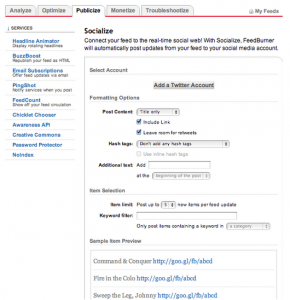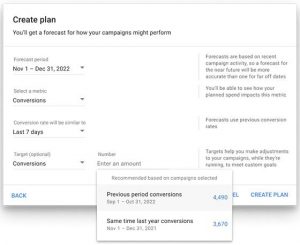Running a small business is no walk in the park. I often tell folks that half of a small business owner’s time is spent running around with their pants on fire, trying to figure out and keep up with the needs of their business before it all goes up in smoke. Maybe that’s why only half of small businesses survive beyond their fifth anniversary.
For many small business owners, payroll is the biggest expense. But, you need all hands on deck if you plan to keep your business running. No employees = no business. Thus, many struggling businesses have nightmares about not being able to make payroll .
In today’s business landscape, you might find yourself in a position where you aren’t able to pay your employees. This could stem from a variety of different causes. Maybe the local economy is in shambles. Maybe the big contract you were banking on fell through. Or, maybe your projected cash flow is constricted due to poorly planned terms of payment.
Regardless of how it happened, here are four steps struggling businesses should follow when they can’t make payroll.
Step 1: Accept and communicate that you can’t make payroll
There is a good chance that you noticed signs in advance that hinted at your lack of funds. Not being able to make payroll is probably not a last minute surprise.
It can be embarrassing as an individual, and as an entrepreneur to admit that your business isn’t the massive success that you imagined it would be… not yet anyway. You’re in the thick of it, and it hasn’t been your best week. It’s important to communicate to your employees that you can’t make payroll.
There’s a chance that some of your employees are on a tight budget, and live paycheck to paycheck. Don’t break the news to them at the last minute. The longer you wait, the more impactful the situation could be on their financial situation, as well as their future employment with your company. As the leader of your company, it’s your duty to do what’s best for your employ even when it’s unpleasant; no, especially when it’s unpleasant.
Tell employees your plans. Let them know how you plan to pay them and what steps you are going to take to get the business back on track. If employees should begin looking for other work, you need to tell them this, too. It’s the honest, responsible thing to do, and you owe it to them.
As a small business owner, you do have something to your advantage that big businesses don’t have. Small businesses often feel like family. You and your employees might know each other well. This family environment could make employees more willing to stay by your side during this turbulent time.
Step 2: Acquire Temporary Financing
Now that you’ve admitted that you won’t make payroll, you’ve got to lock down temporary financing to salvage the situation. This is where you really step into payroll triage.
Determine out how much money you’ll need to come up with before you start your search for financing. The figure you come up with may determine which fund-raising options are available for your situation.
Below are five resources that might help you make payroll.
Personal funds
Take a look at your personal savings. Can you afford to invest some money to help the company make payroll? You might also be able to use credit cards to make payroll.
Customers
Closely examine your accounts receivable. Do you have any customers that owe you money? Customers might be willing to make a payment sooner if you offer an incentive, like a percentage off their amount due. While this will cause you to lose money in the long-run, it might help you to get paid faster. This is a trade-off that you might have to make if you can’t make payroll.
You can also do this with customers who have displayed interest in your goods or services but have not committed to buying. Offering a limited-time discount might be what someone needs to go through with a purchase.
Suppliers
Talk to suppliers. They might be more understanding about missed or delayed payments than employees will be. Ask them if you can postpone a payment or work out a payment plan. Having extra time to pay suppliers could give you the money you need to pay employees.
Small Business Loans
You can try to get a traditional bank loan or an SBA loan. However, the approval process for loans can be lengthy, especially for struggling businesses. Depending on how early you identified your inability to make payroll, an SBA or standard bank loan may not come through in time to help.
You might also want to consider asking friends and family for financial help. Someone could be willing to loan you money with better terms than you can find from a traditional lender.
You do have another small business loan option: a hard money loan. You can receive funds in approximately 5 business days, which can help if you’re in a pinch. Hard money loans often have very high-interest rates, and use real estate as collateral. Hard money loans are considered to be risky for both the borrower and the lender, so make sure you understand all of the loan terms. These short-term loans should be the last resort for struggling businesses.
Pay cuts
You might have to make pay cuts if you can’t make payroll. Consider cutting your own earnings first. You can suspend your compensation until your business is back on its feet. This shows your employees that they aren’t the only ones taking a financial hit, and that you’re serious about the long-term success of the company.
You could temporarily reduce the hours employees work, which will reduce their earnings and immediately free up cash flow. You can do this by reducing everyone’s scheduled hours, or you can ask employees to volunteer to take unpaid time off instead.
You can reduce employee wages as long as employees are still paid at least minimum wage. If you have salaried employees, you can reduce their salaries. However, reducing salaries might alter whether or not a worker meets exempt employee qualifications. If employees’ exempt statuses change, you must pay them minimum wage. Despite wage reductions, you must still pay overtime wages to all nonexempt employees who work overtime hours. Thus, it would benefit a struggling business to temporarily define overtime policies that will free up some much-needed cash.
Step 3: Pay your employees
You might have read this step’s heading and said, “But, I don’t have money to pay my employees.” Well, you still need to pay them.
Failing to pay employees on the regularly scheduled payday is a violation of the Fair Labor Standards Act (FLSA). When you violate the FLSA, you might have to pay back wages, back taxes, criminal penalties, damages, attorney’s fees, and court costs. You may also face imprisonment. These expenses will more than likely cost you more than finding a temporary solution to meet payroll.
In addition to legal penalties, late paychecks could decrease employee effort and morale.
As mentioned in the pay cuts section of step two, you can reduce employee wages and hours. But, you must pay nonexempt employees at least minimum wage and overtime wages. What is the FLSA policy about not doing so? You guessed it, they will impose more penalties.
Talk to your employees in advance if you need to reduce their hours and wages. Make sure there are no surprises on pay day. Let your employees know approximately how long their hours and wages will be reduced.
Step 4: Prepare your struggling business for the future
You might have found a quick fix to run payroll this time, but that is the equivalent of sticking a piece of bubble gum on a hole in your car tire. You need to make permanent changes to avoid driving on your rim.
Take a thorough look at your business’s spending habits. Identify all your cash flow problems. You might need to restructure parts of your business.
Consider your overhead expenses. You might want to look at reducing the expenses that don’t demonstrate ROI. For example, payroll expenditures do not make you money. Payroll should be about 15-30% of your business’s gross revenue.
If you spend more on payroll, you should look for ways to reduce payroll and increase your revenue. Also, try an inexpensive, online payroll software. Using online software to run payroll is more than likely cheaper than most methods.
Examine your company’s accounts receivable terms. If your policy is too lenient, you might not get receivables in an optimal fashion. You will experience cash flow problems when customers take long amounts of time to pay you. And, cash flow problems equate to less money for payroll and bills.
If you aren’t making enough sales, you might want to do a market analysis. Once you conduct a market analysis, you’ll have a better understanding of your customers, competitors, and industry. You can then pivot your product or service offerings accordingly.
For future financial emergencies, take the time to build up your business’s savings now. Commit to putting a certain percentage of your business’s income into a savings account.
Continue to be open with your employees. Telling employees that you can’t make payroll may cause them to second guess their job security. Let them know how you plan to get your business back on track, and tell them how your plans will impact them. Transparency is key for struggling businesses.
Finally, consult an accountant. An accountant can help you understand where your money is going so you can make informed business decisions that will lead to the long-term success of your business and employees.
Business & Finance Articles on Business 2 Community(53)






